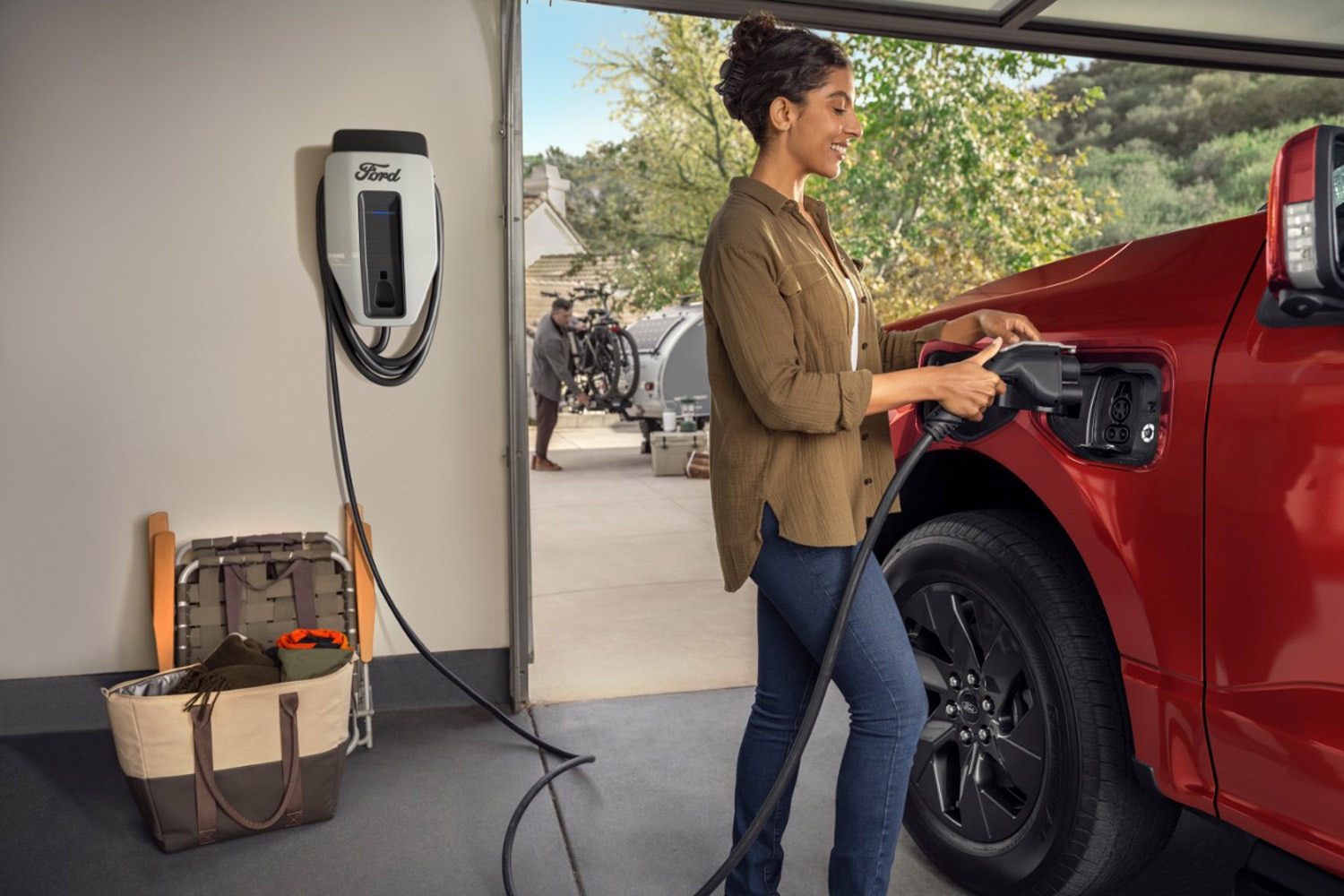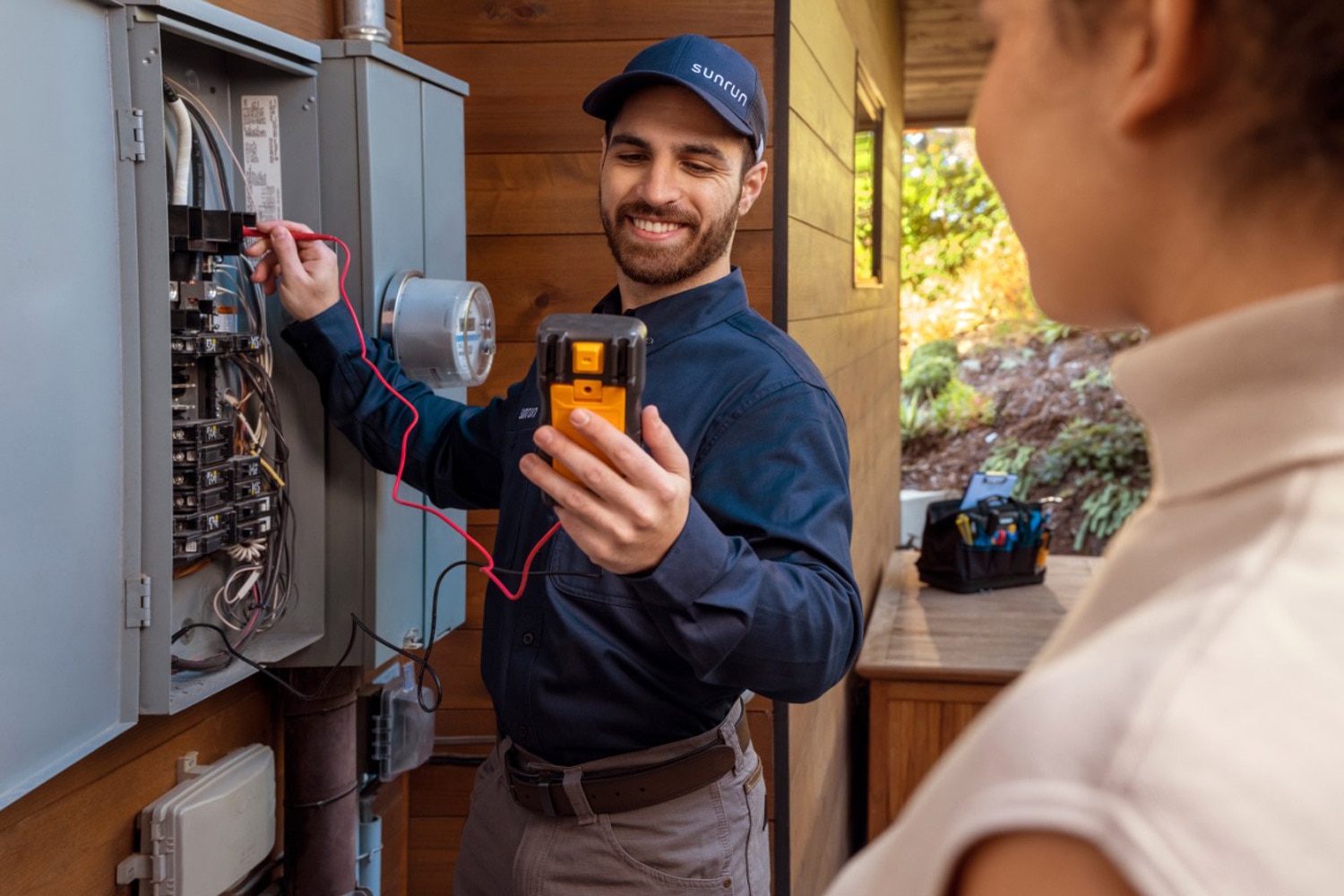What You Need to Power Your House with a Ford F-150 Lightning
Ford Intelligent Backup Power allows the electric F-150 to send its stored electrons to your home during a power outage—as long as you've spent the money on the right equipment.
 Ford
Ford
With the launch of the electric F-150 Lightning, Ford has touted the ability to use the truck to power a house in the event of a blackout. Though exporting power isn't unique to the Lightning, the system is integrated in a way that no other electric car on sale today offers. But if you’re planning to rely on an F-150 Lightning powering your house, know that using this feature—as advertised—is not as easy as plugging in a cord. Here’s what it takes and what it costs to use Ford Intelligent Backup Power.
What Equipment Do You Need?
Every F-150 Lightning has the ability to power a house, but there are two additional pieces of equipment you’ll need in order to use the feature: the Ford Charge Station Pro and the Home Integration System.
 Ford
Ford
The Ford Charge Station Pro is an 80-amp home charging station that comes standard with the F-150 Lightning’s optional extended-range battery pack or can be purchased separately for standard-range trucks at a price of $1,310. The Home Integration System, purchased through Ford’s partner Sunrun for $3,895, includes a power inverter, transfer switch, and battery to start the system, which enables two-way power flow.
How Does It Work?
Once you have the system installed, Ford Intelligent Backup Power works automatically. If your truck is plugged in and the power goes out, the Home Integration System will automatically transfer the stored power from your truck to your home. Once power is restored, the system automatically reverts to utility power.
Ford says an F-150 Lightning with the extended-range battery can power a house for about three days when using 30 kilowatt-hours (kWh) of electricity per day. (An American household uses 29 kWh per day on average). The company also claims that it can be stretched to as long as 10 days with energy rationing. Owners can also limit how much energy is pulled from the truck if they want to leave some in reserve for driving.
How Much Does Ford Intelligent Backup Power Cost?
If you’re looking for the cheapest option, the F-150 Lightning Pro trim with the standard-range battery costs about $42,000. You’ll also need to spend $1,310 for the charge station and $3,895 for the home integration hardware.
 Ford
Ford
The other cost consideration is the installation price, which varies based on location and your house’s wiring. You may need to replace your circuit breaker, which will increase the cost significantly. In Chicago, Illinois, for example, installation could range from $2,000 to $10,000. In the best-case scenario, you’re looking at about $49,000 to purchase a truck with the ability to keep the lights on and refrigerator running during outages.
If you want to power a house for longer periods, it will cost you. The lowest-priced F-150 Lightning with the extended-range battery is the XLT trim, which starts at $74,269 and includes the Ford Charge Station Pro. Factor in the Home Integration System and the installation, and you’re likely looking at more than $80,000.
Is There an Easier or Cheaper Way?
If you don’t want to go through the hullabaloo (and cost) associated with using Ford Intelligent Backup Power, there is an easier way to ride out an outage with the Lightning. All electric F-150s come with Pro Power Onboard, providing 2.4 or 9.6 kW of AC power depending on level and options. With eight to 10 household outlets, plus a 240-volt outlet in the bed of trucks with the 9.6-kW system, the Lightning can power the most important items in your house, such as a space heater or furnace fan and a refrigerator, using extension cords.
Written by humans.
Edited by humans.
 Jill Ciminillo
Jill CiminilloJill Ciminillo is a Chicago-based automotive writer, YouTube personality, and podcast host, with her articles and videos appearing in outlets throughout the U.S. Additionally, she co-hosts a weekly radio show on cars for a local Chicago station. Previously, Jill has been the automotive editor for both newspaper and broadcast media conglomerates. She is also a past president for the Midwest Automotive Media Association and has the distinction of being the first female president for that organization.
Related articles
View more related articles